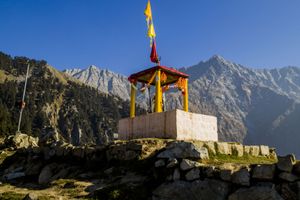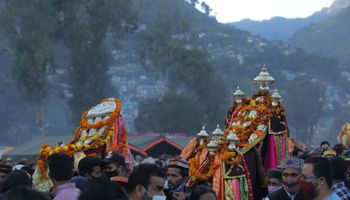The Great Himalayan National Park or GHNP resides in the state of Himachal Pradesh. With a maximum elevation of nearly 20,000 feet, this national park reflects the unique flora and fauna found only at these heights. If you want to experience the mountaintops, forest and local wildlife, plan your trip to GHNP right now.
Journeying to National Park Status
The GHNP is a reflection of India's dedication to conservation because it took several decades to officially protect this region. Initially, the park's creation started with several land surveys of the natural watershed areas. Led by several conservation projects, these organizations continued to research and fight for the park's designation. Finally, the park was deemed a World Heritage Site in 2014 after applying for the status in 2011. Now, the GHNP can remain untouched by development and thrive as a critical environment for both flora and fauna.
Participating in Local Activities
Based on the season, certain activities are available for visitors at the GHNP. Bird- and pheasant-watching excursions occur during the winter and spring, for instance. Enjoy fishing, camping and rock climbing in the late spring or summertime. Remarkably, there's a local fair occurring annually during the warmer months. Activities can vary, however, so verify your selections before traveling to the park.
Exploring the Biodiversity
A key reason for the park's UNESCO World Heritage designation is the remarkable biodiversity found here. First, the fauna ranges from Indian Red Admiral butterflies to majestic common leopards. Himalayan brown and black bears are also a highlight from afar.
Next, the flora thrives across the foothills as sunlight and moisture are abundant. Look for orchids, rhododendrons and delightful mushrooms during the warmer months. Typically, the conifers attract many visitors as you marvel at the pines and cedars native to this area.
Trekking Within the Valleys
Surrounding the GHNP are several valleys. As snow and rain melt in the mountains, the valleys provide a pathway for the flowing water. Over thousands of years, water has carved these valleys out, which makes them perfect day trips around the park. Overall, there are four main regions, including Parvati, Sainj, Jiwa Nal and Tirthan valleys. If you enjoy treks with only a few people nearby, these valley hikes are particularly attractive.
Traveling to the GHNP
Reliable roads lead into the GHNP when the weather is pleasant. Typically, most visitors arrive from nearby towns, such as Manali, Dharamsala, Shimla and even Delhi. Both buses and taxis can take you to the park's entrance. Because of the terrain, access the majority of the park by foot afterward. Also, many trekking routes require a fee and permission, depending on the itinerary. Ideally, check in with a forest ranger to comply with all rules and regulations.
As you plan your trip to Northern India, be aware of any fees or permits required for treks and camping. When you arrive, you can begin your itinerary without any delay. Certainly, the GHNP welcomes all visitors to learn about conservation as it applies here and across the globe.






















